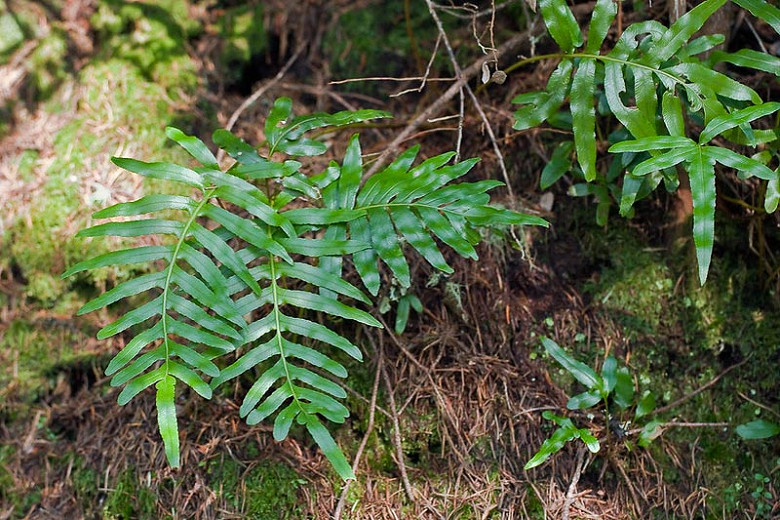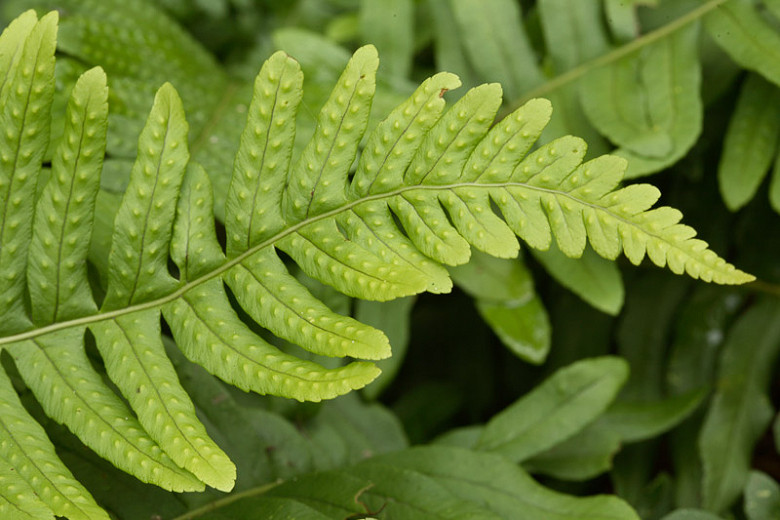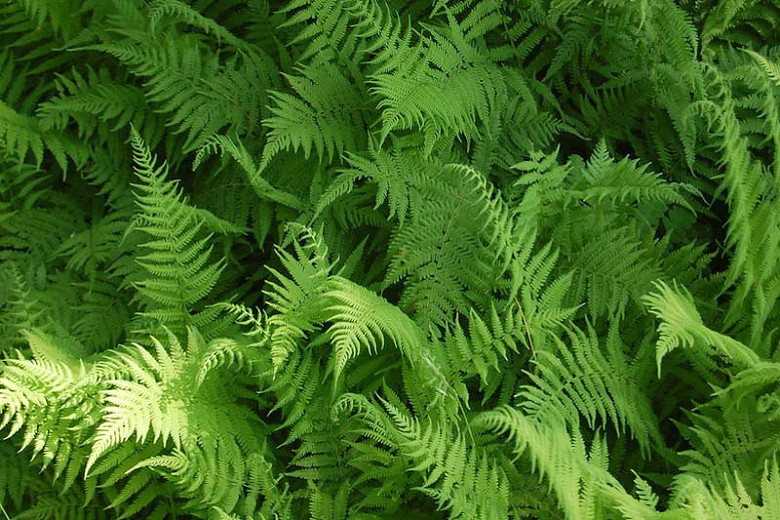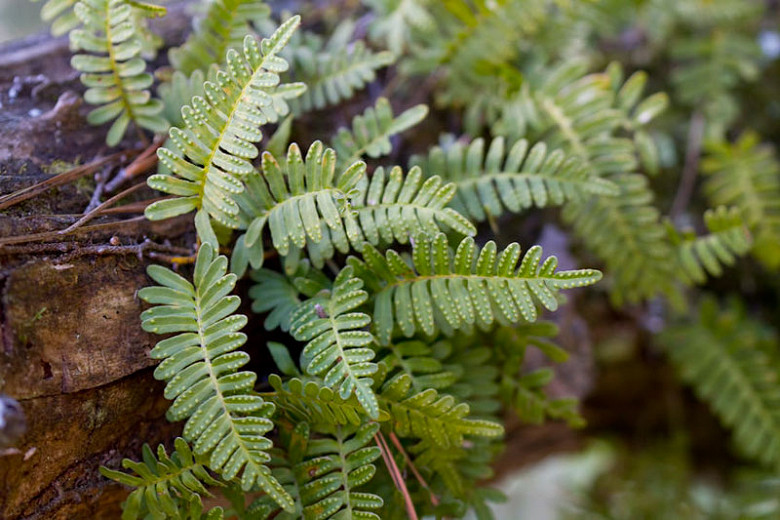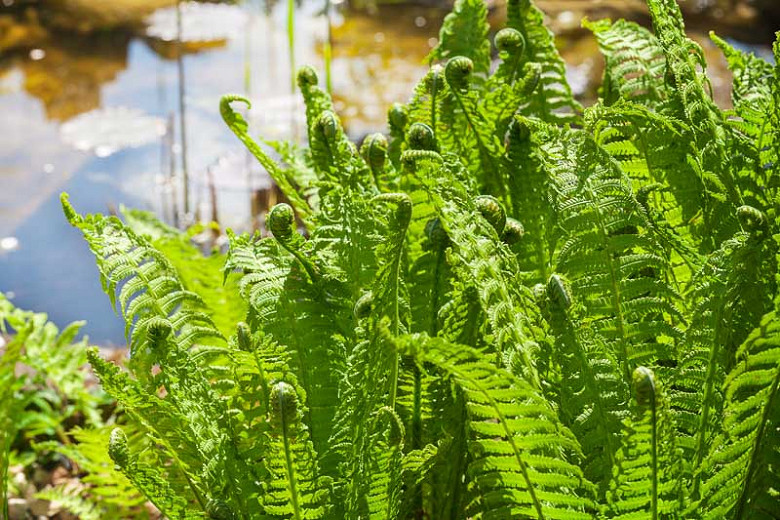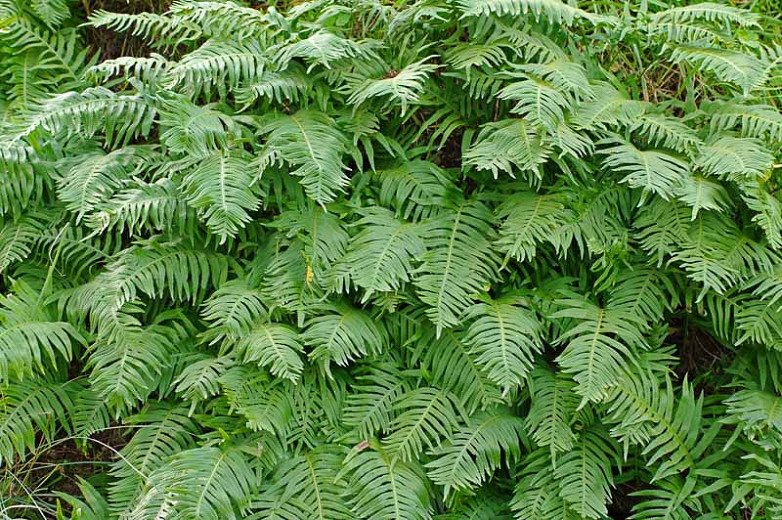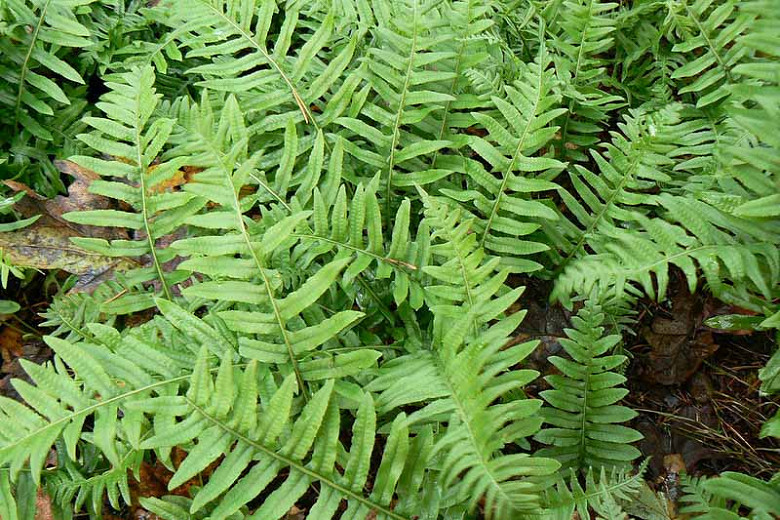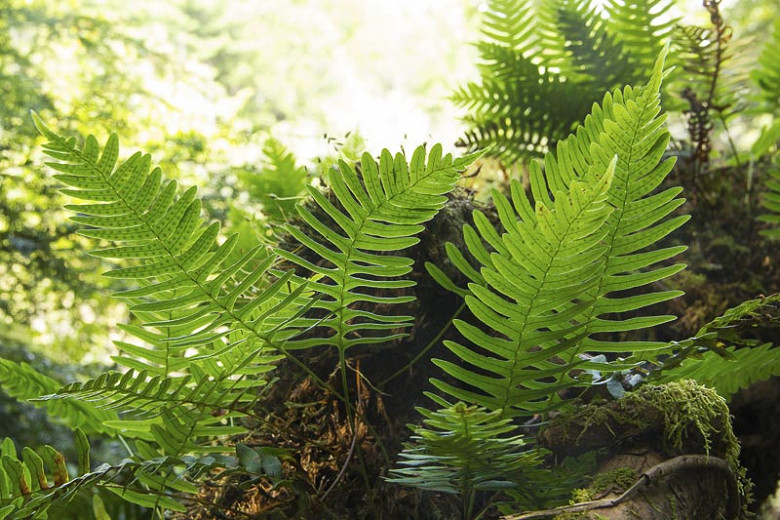Polypodium scouleri (Leathery Polypody)
Polypodium scouleri (Leathery Polypody) is a spreading, evergreen fern with bold, broadly ovate to triangular, leathery, glossy, dark green fronds, up to 12 in. long (30 cm). The spores line the backs of the fronds in rows of rusty orange clumps (sori). Remaining lush and fresh-looking throughout the season, Leathery Polypody spreads by branching rhizomes and colonizes at will on trees or rock formations – without being invasive. Native from British Columbia to California, Leathery Polypody tends to grow in fog drip or salt-spray zones, at elevations from sea level to 2,000 feet. Gracing cottage gardens, coastal gardens, or woodland gardens, Leathery Polypody provides four seasons of interest and is also effective as a companion to other shade-loving ferns, perennials, and wildflowers. Its long-lasting fronds are commonly used in flower arrangements.
- Grows up to 6-12 in. tall (15-30 cm) and 12-36 in. wide (30-90 cm). Under the right conditions, Leathery Polypody will spread, gently expanding its presence in the garden.
- Performs best in part shade to full shade in fertile, humus-rich, moist but well-drained soils. Thrives in salt spray. Shelter from cold, drying winds. Protect with a dry winter mulch or lift and overwinter in a cool greenhouse.
- This plant is a great choice for shady beds and borders, underplanting of roses and shrubs, cottage gardens, city gardens, or woodland gardens.
- Virtually pest and disease free. Deer resistant.
- Dead or damaged fronds may be removed as necessary.
- Propagate by division or by spores.
- Native to Western North America.
Requirements
| Hardiness | 8 – 10 |
|---|---|
| Climate Zones | 4, 5, 6, 16, 17, 24 |
| Plant Type | Ferns |
| Plant Family | Polypodium – Ferns |
| Exposure | Partial Sun, Shade |
| Season of Interest | Spring (Early,Mid,Late)Summer (Early,Mid,Late)FallWinter |
| Height | 6" – 1' (15cm – 30cm) |
| Spread | 1' – 3' (30cm – 90cm) |
| Spacing | 12″ – 36″ (30cm – 90cm) |
| Water Needs | Average |
| Maintenance | Low |
| Soil Type | Chalk, Loam, Sand |
| Soil pH | Acid, Alkaline, Neutral |
| Soil Drainage | Moist but Well-Drained, Well-Drained |
| Characteristics | Cut Flowers, Showy, Evergreen |
| Native Plants | United States, California, Pacific Northwest, Oregon, Washington |
| Tolerance | Deer, Salt |
| Garden Uses | Beds and Borders, Bog Gardens, Ground Covers, Patio and Containers, Underplanting Roses and Shrubs |
| Garden Styles | City and Courtyard, Coastal Garden, Informal and Cottage |
